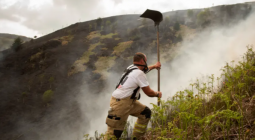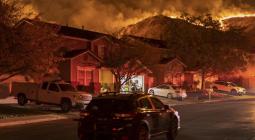Billions needed to protect Glasgow from climate effects, report says
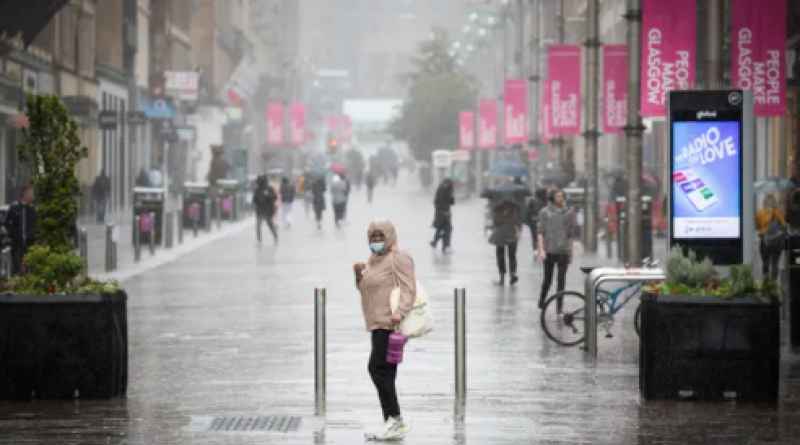
Exclusive – Study says 2m in Clyde area – due to host Cop26 – face severe disruption without urgent investment
Nearly 2 million people living in the greater Glasgow area face severe disruption from climate heating unless billions of pounds are invested in protecting homes, businesses and transport links, a report says.
A study on the impacts of climate change on the Clyde area estimates about 140,000 of its poorest residents will be the worst affected by increased heatwaves, flash floods and droughts, as they are the least equipped to cope.
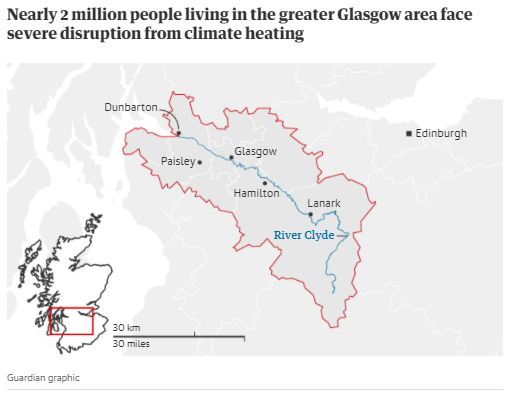
The report from Climate Ready Clyde, a coalition of 15 councils, universities, the NHS and infrastructure bodies, has been published as Glasgow prepares to host the Cop26 global climate talks in November.
It estimates there is already a funding shortfall of at least £184m a year to begin retrofitting homes and offices for heatwaves, defending roads and rail links against flooding and storms, and planting 18m trees to absorb higher temperatures and rainfall over coming decades.
“Urgent mobilisation of additional finance is crucial,” the report says, adding that failing to do so will cost the region billions in lost income and emergency spending.
James Curran, the coalition’s chair and a former chief executive of the Scottish Environment Protection Agency, said a “transformational approach” was needed. Playing host to Cop26 added to the sense of urgency in the region.
“Climate change exacerbates existing inequalities and if we don’t respond in a coherent and urgent way then the inequalities that already exist in society will be worsened,” he said.
“Some of the people who can least afford it and are least culpable in creating climate change are the ones that are going to suffer more with poor housing; they will be suffering damp in the winter; they’ll be suffering excessive heat in the summer; public transport will be disrupted.”
The region, which has a population of 1.8 million across an area of 1,292 sq miles (3,346 sq km) straddling the River Clyde, including towns such as Hamilton, Paisley, Lanark and Dumbarton, is already one of the UK’s wettest city regions.
Met Office climate forecasts estimate that without radical action to halt global carbon emissions, Glasgow’s maximum summer temperatures will rise by at least 1.1C by 2030 and by 2.6C by 2080.
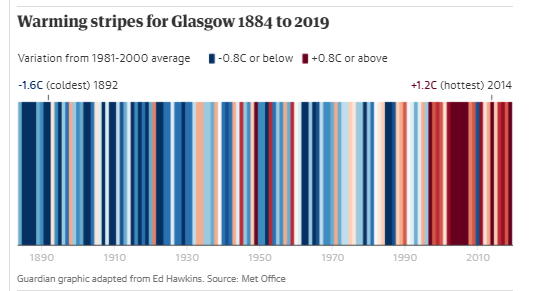
By 2050 there is a 50% chance that every year Glasgow will experience summers as hot as the record reached in June 2018, when the city baked in temperatures of nearly 32C, buckling rail lines and melting material in the roof of the Glasgow Science Centre.
Average rainfall in summers will fall by about 5% under the conservative scenario, but the area will experience flash floods. Winter rainfall will increase by at least 5%, with a far greater rate of intense storms.
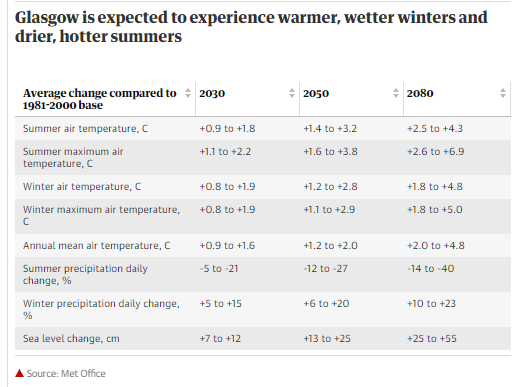
Those figures assume the world limits climate heating to 2.9C above pre-industrial levels by 2080. In a worst-case scenario where they rise by 4.6C by 2080, the city’s peak summer air temperatures could rise by 7C.
The report, the Glasgow city region adaptation strategy and action plan, says those general changes and an increase in extreme weather events mean up to 100,000 homes and 18,700 businesses in the region would be put at risk of flooding by 2080.
Viewed by climate policy experts as one of the most significant to emerge in the UK, the report identifies 11 priority issues, including some where there is already inadequate investment and planning. They include:
-
An early warning system of public climate alerts covering many more hazards, including surface flooding, heatwaves, droughts, wildfires and landslips.
-
Setting aside vacant land to use as flood plains, and blocking new developments on flood-prone areas.
-
Paying to adapt people’s homes and workplaces to cope with heatwaves, flooding and subsidence, particularly for residents in the poorest areas and in high-density housing.
-
Investing in habitat restoration, tree-planting and wetlands to strengthen natural protection against flooding and heatwaves.
-
A significant increase in spending to protect roads, rail lines and bridges from flooding, erosion and landslips.
-
Ensuring social justice is embedded in the region’s climate strategies, so the poorest and most vulnerable are helped the most.
Chris Stark, the chief executive of the Climate Change Committee, which advises the UK’s governments on climate strategy, said the Clyde plan should be replicated by other city regions.
“It’s a meaningful and pleasant plan. You can imagine what a well-adapted city ready for climate change would look like. And it would be a profoundly positive thing for the region and all the people living in it,” Stark said.
There are criticisms that it avoids challenging the region’s heavy reliance on motorways and private car use, and does not propose far greater investment in public transport. CRC argues their new report focuses on adapting to the impacts of climate heating rather than transport systems.
Dr Richard Dixon, the chief executive of Friends of the Earth Scotland, said failing to tackle car use was a “missing piece” in the strategy. But he added: “Agreeing such an ambitious plan with a wide range of bodies can have been no mean feat. It is particularly important for concentrating minds of decision-makers that there is a clear and specific price tag put on the necessary work.”
June 2021
The Guardian


